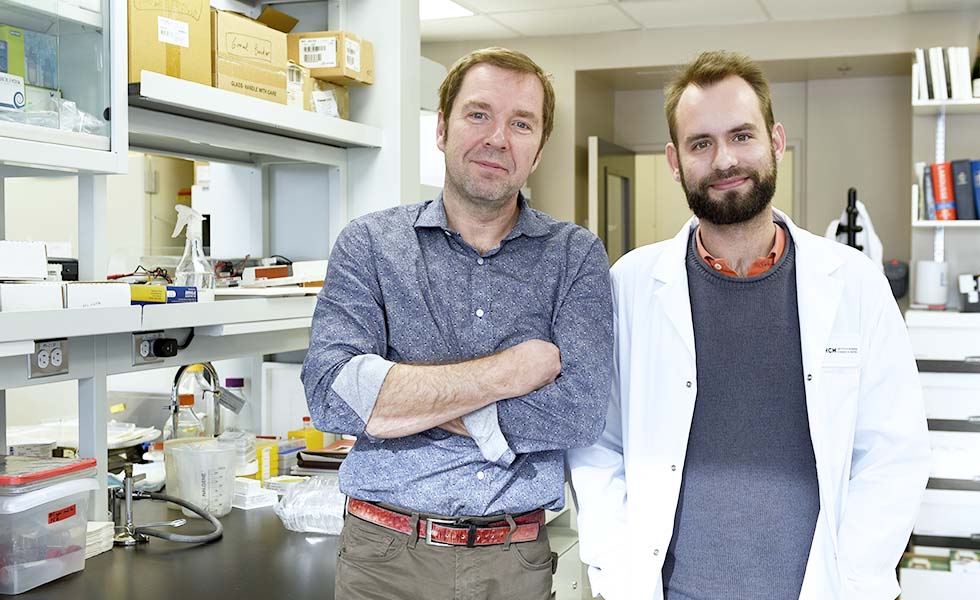
When you experience a painful sensation such as touching a hot stove with your hand, the pain is restricted to your hand, allowing you to remove it quickly from the source of heat. How does the brain know that the pain is indeed coming from your hand and not from anywhere else on your body? Work recently published by Montreal Clinical Research Institute (IRCM) researchers help clarifying this question.
The group led by Artur Kania, Director of the IRCM’s Neural Circuit Development Research Unit as well as Professor McGill University’s and Université de Montréal’s Faculty of Medicine, demonstrated that the organization of the axons – which can be thought of as wires passing information between neurons – relaying pain information from the spinal cord to the brain is critical to allow the brain to locate the source of pain. Their findings were recently published in Cell Reports.
It is fairly well known that the left side of the brain “feels” the right side of the body, and vice versa. This happens because axons relaying sensations, including pain, from the spinal cord to the brain, cross from one side of the nervous system to the other. What is the function of these crossed connections? In collaboration with scientists in Switzerland and Australia, Dr. Kania’s team, including the Ph. D. student Ronan da Silva, studied how mutations in a gene called DCC impact the wiring of connections between the spinal cord and the brain, in mice and humans. They found that mice and humans with DCC mutations have difficulty discerning the location of a painful stimulus. For example, patients with DCC mutations experience mirrored sensations, where stimulating a certain body part cause the subject to perceive it in the stimulated site and also on the same part on the opposite side of the body. These experiments provide clues about the arrangement of neuronal connections that relay different kinds of information about pain, for example, its location or its intensity. Shutting off connections concerned with pain intensity but not its location may be a more precise way to relieve chronic pain, with fewer of the undesired side effects of the current pain relief medications such as opioids.
About the study
This research was conducted at the IRCM Neural Circuit Development Research Unit by Ronan V. da Silva, R. Brian Roome, Farin B. Bourojeni, Nicolas Stifani, and Artur Kania. Helge C. Johannssen, Matthias T. Wyss, Bruno Weber and Hanns Ulrich Zeilhofer from the University of Zurich, Ashley P. L. Marsh, Monique M. Ryan, Paul J. Lockhart and Richard J. Leventer from the University of Melbourne, Linda J. Richards from the University of Queensland, as well as Bernard Rosenblatt and Myriam Srour from Montreal Children's Hospital also collaborated on the study.
The research was funded by Brain Canada, Quebec Pain Research Network, McGill-Zurich collaborative grants, the Canadian Institutes of Health Research, the Fonds de recherche du Québec – Nature et technologies, the Fonds de recherche du Québec – Santé, an Australian Postgraduate Award, the National Health and Medical Research Council, Melbourne’s Children, the EJLB Foundation, the Canadian Foundation for Innovation, the W. Garfield Weston Foundation, the University of Zurich, the National Health and Medical Research Council and the Victorian Government’s Operational Infrastructure Support Program.
Source :
Anne-Marie Beauregard, Communication Advisor, IRCM
514 987-5555 | anne-marie.beauregard@ircm.qc.ca




